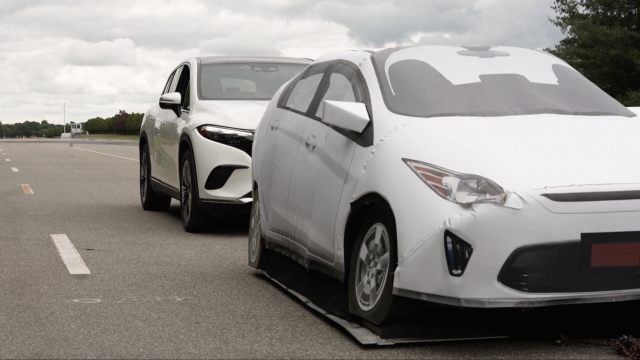Along stretches of pavement in rural Connecticut, the complex features now making their way into vehicles are put to the test.
"It's really exploded in terms of features that are making drivers safer," said Kelly Funkhouser, manager of vehicle technology at Consumer Reports, which just completed construction on a new $1 million vehicle testing roadway. "We are at the back side of our brand new 1.5-mile ADAS loop. ADAS stands for 'advanced driver assistance systems,' which is this broad umbrella term that's used for things like active safety, such as automatic emergency braking, forward collision warning, blind spot warning."
It also encompasses other driving assistance features, like lane centering, which are becoming more commonplace in vehicles.
"New risks are starting to be introduced," Funkhouser said. "Unfortunately, the systems are not perfect yet."
Before those systems get tested, they start out in one of multiple garage facilities on the Consumer Reports campus.
SEE MORE: Are self driving cars safe?
"We are a nonprofit and we buy all of the vehicles that you see," said Alex Knizek, Consumer Reports' manager of automotive testing and insights.
It is a place where the drivers who will test the vehicles first get a handle on all the features available from the driver's seat.
"There are so many vehicles on the road today where the screens are getting larger and more complex and the controls are becoming touchscreen instead of buttons and knobs and things that are easy to use," Knizek said.
That is where the vehicle testing comes in. As opposed to just a closed track, the new loop is specifically designed to mimic what drivers will encounter in real life — right down to curves and hills, as well as ramps and merge lanes.
"We also worked with some safety organizations, such as the National Transportation Safety Board, who came out here last year and mentioned a few types of obstacles where they're seeing some of these systems have trouble in the real world and crash," Funkhouser said.
She shared her thoughts on what she looks for when looking for a new vehicle.
"The first thing is actually simple controls and displays," Funkhouser said. "People really love blind spot warning. It's kind of a fan favorite right now. Automatic emergency braking is one of the best proven safety features that has recently come on to cars."
While the focus may appear to be on the safety of the vehicle and its occupants, those testing the vehicles at Consumer Reports said it's the safety of people outside that concerns them, too.
SEE MORE: Does your city have the riskiest drivers?
"One thing that we're really looking at right now is pedestrian safety — as the size of vehicles and the hood height of vehicles gets taller and bigger," Funkhouser said.
That is why they are closely looking at how well front-facing cameras in vehicles would work, similar to the current rearview cameras that are available.
"We increase the hood height and reduce the visibility, so that we help protect the occupants inside the car — but that comes with a risk of now reducing the visibility and creating these new blind zones around the car that we never had before," Funkhouser said.
Consumer Reports is now starting to test the 2024 models as they slowly get rolled out.
They will then publish the testing data both online and in their magazine, which people can access for around $5 a month to see how the vehicles fare, before buying one.
"We're trying to stay one step ahead," Funkhouser said.
Trending stories at Scrippsnews.com




